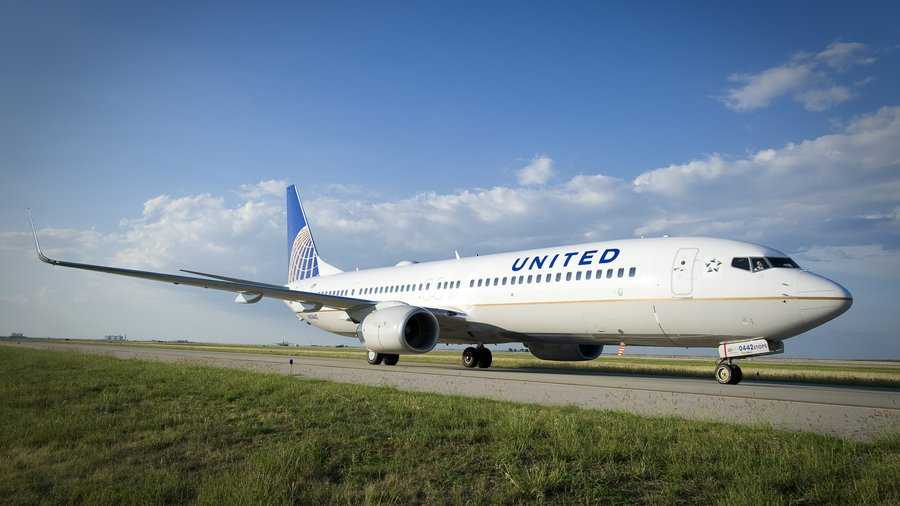United Airlines Flight UA770, a routine transcontinental flight, made headlines when it was forced to make an emergency diversion during its journey. This article explores the sequence of events, the reasons behind the diversion, and the protocols in place for ensuring the safety of passengers in such situations.

Overview of United Airlines Flight UA770
Flight UA770 was scheduled to travel from San Francisco International Airport (SFO) to Newark Liberty International Airport (EWR). This flight, like many long-haul routes, operates regularly to connect the West Coast to the East Coast of the United States, catering to both business and leisure travelers. Onboard the flight were passengers from diverse backgrounds, each with unique destinations and purposes for their journey.
However, during the flight, unforeseen circumstances led to the need for an emergency diversion. Let’s break down the incident and the response of United Airlines and aviation authorities.
What Happened on United Airlines Flight UA770?
The emergency diversion of Flight UA770 occurred when the aircraft, a Boeing 777, experienced technical difficulties that could potentially compromise its safe operation. Although United Airlines has not disclosed the exact nature of the technical issue, it is widely speculated that it may have involved a mechanical malfunction or engine-related issue. Such diversions are common in aviation and are often triggered by issues that could impact the aircraft’s ability to continue on its planned route safely.

Reasons Behind the Emergency Diversion
Emergency diversions, while rare, are crucial in ensuring the safety of passengers and aircraft crews. In this case, United Airlines acted promptly in response to the situation. The decision to divert a flight is typically based on factors such as:
- Mechanical Malfunctions: A malfunction in the engine, fuel system, or avionics can force a plane to divert. This ensures that the aircraft has ample time to land at an alternative airport for maintenance.
- Weather Conditions: Adverse weather can often pose risks to flight safety, making diversions necessary to ensure a safe landing at a nearby airport with clearer weather conditions.
- Medical Emergencies: Although not the case in UA770’s diversion, medical issues with passengers or crew can sometimes require an emergency landing.
In this case, reports indicated that the diversion was due to a technical issue, and United Airlines immediately coordinated with air traffic control to reroute the flight to a nearby airport equipped to handle the emergency.
The Diversion Process: How It Happens
When a flight is diverted, there are several steps that take place to ensure the safety of all onboard. These steps include:
- Communication with Air Traffic Control: Once the decision to divert has been made, the flight crew communicates with air traffic control to determine the best course of action. The crew will provide details of the situation, and air traffic controllers will guide the plane to an appropriate airport for emergency landing.
- Preparation for Landing: During the diversion, the aircraft’s crew works in tandem to prepare the plane for a safe landing. This includes reviewing emergency protocols, informing passengers about the situation, and ensuring that the landing gear and other critical systems are functioning properly.
- Rerouting the Flight: The flight path is adjusted to direct the aircraft to the nearest suitable airport. In some cases, this can mean an unscheduled stop at a smaller airport or a major hub, depending on the circumstances.
- Safe Landing: Upon arrival at the diversion airport, emergency services are typically on standby to assist with any potential issues during landing. After the plane safely lands, passengers may be deboarded, and the aircraft undergoes immediate inspection and repairs.
The Role of United Airlines in the Diversion
United Airlines, known for its commitment to passenger safety, swiftly acted to manage the situation. Upon the diversion, the airline provided the necessary support to passengers, including updates on the diversion and options for further travel. United Airlines also worked with airport authorities to ensure passengers could safely continue their journey.
In the aftermath of the emergency diversion, the airline offered compensation, including meal vouchers and hotel accommodations for affected passengers, ensuring their comfort during the unexpected layover.
Passenger Safety and Airline Protocols
United Airlines, like other major airlines, adheres to strict safety protocols, including regular maintenance checks and crew training to handle emergency situations. The airline’s commitment to safety is reflected in the fact that emergency diversions, while inconvenient, are often the result of careful decision-making that prioritizes the welfare of passengers and crew.
Conclusion
The emergency diversion of United Airlines Flight UA770 serves as a reminder of the crucial role that safety plays in aviation. While diversions can be unsettling for passengers, they are part of a broader system of measures designed to ensure that any technical or safety-related issue is addressed before it can escalate. United Airlines’ swift action in diverting Flight UA770 reflects the airline’s dedication to the safety and well-being of its passengers, ensuring they arrive safely at their destinations despite unexpected challenges.
